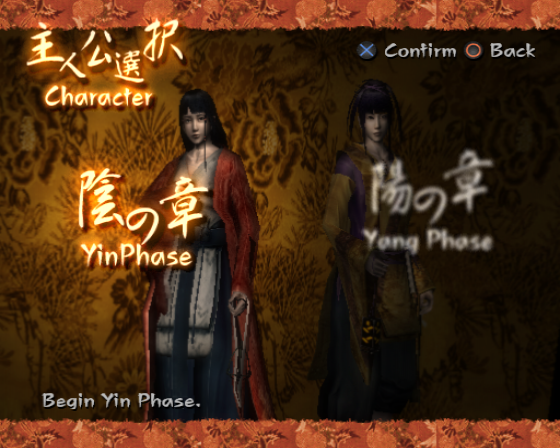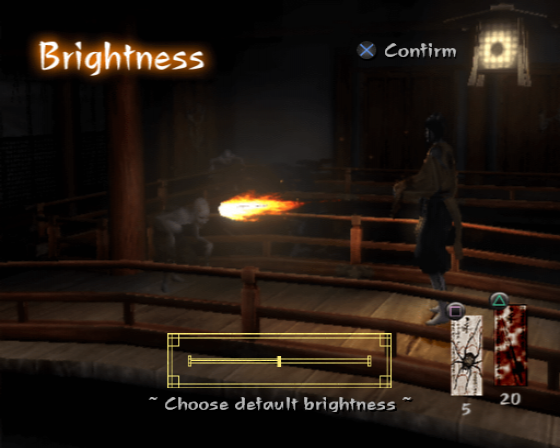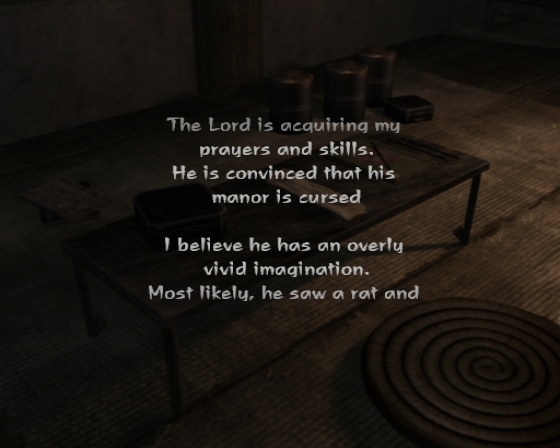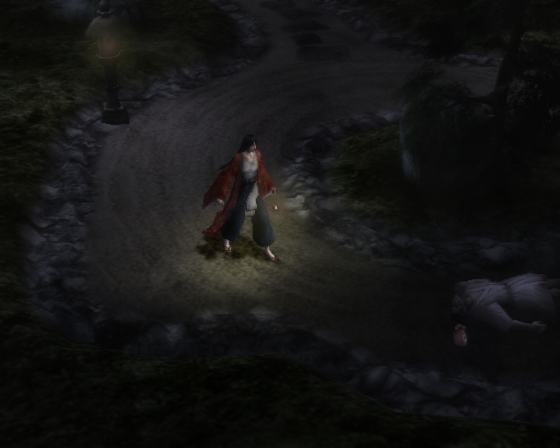
Gamespot
 4th February 2023
4th February 2023
Categories: Review: Software
Author: Bethany Massimilla
Publisher: Indie Games Productions
Machine: PlayStation 2 (EU Version)
Kuon
Kuon is inhibited by ponderous combat controls, its repetitious nature, and an overall lack of depth.
Haunted mansions are a horror staple, and Kuon adds its own twist to the usual formula by plunking that mansion in the Japanese past, pitting its priestess protagonists against a mysterious infestation of twisted humanoid creatures. There are some chilling moments to be had, and a whole lot of blood is spilled, but Kuon is largely bereft of impact. It's inhibited by ponderous combat controls, its repetitious nature, and an overall lack of depth.
You may begin Kuon as one of two characters: the demure Utsuki, daughter of the local temple's mystic priest, or Sakuya, a disciple of the temple who's got a bit more of a backbone. Both young women come to the Fujiwara manor seeking to unravel the mystery of why its inhabitants have disappeared without a trace. Utsuki arrives with her sickly sister, Kureha, to try to find their father, while Sakuya arrives with a group of disciples dispatched by the priest to purify the mansion and its people of any ill. Things evolve into a sordid tale of treachery and evil magic, but you'll find out who the villain is pretty early on. While there's still plenty of disturbing imagery and a slight twist or two to keep matters interesting, the predictability saps a bit of the tingle out of the unfolding drama.

Your foes are predominantly creatures called "gaki," which are human in form and have a charming habit of seeking people out and devouring their still-warm flesh (and they have atrocious table manners). While you can move slowly and hide from some of the enemies you'll encounter, you'll be taking on the bulk of them in combat. Each character has the ability to use both magic-based attacks as well as close-quarters melee with a weapon. The magic attacks come from spell cards that you'll find scattered about the mansion and its grounds, and they consist of both projectile attacks as well as spirits you can summon to fight alongside you. You can map any card type or your melee weapon to one of two buttons that you'll use to attack.
Your attacks aren't very responsive, however. There's generally a delay when you first make a move (despite having weapons hotkeyed, the game will go through the motions of making you take them out before you attack), as well as a delay in subsequent moves, making battles play out unevenly. Magical projectile attacks don't auto-target unless you're at a certain angle, and your characters turn slowly, so running ahead and then trying to whip around and wait while your character pulls out a magic card is wonky. In fact, with the exception of a few very useful summon monsters, and a couple of bosses you don't want to get close to, the most efficient way through the game is to just hack things with your melee weapon, since it's faster than using magic. But melee is still subject to motion delays, and you'll always be taking hits despite your best efforts, since you can't briskly chain attacks. The sluggish combat heightens exasperation instead of tension.
The tension of your character plays a part in matters as well. There are certain areas where negative energies are concentrated, and when your sensitive spiritual mediums get in the range of one of these unseen areas (called tempests), they'll typically see a vision and get freaked out. If you're running, the effect is worse and can make you lose stamina. At best your controller will vibrate with a heartbeat while your character tries to find her equilibrium, and at worst she'll have to recover some health. Fortunately, you can stand in one place and meditate at the touch of a button, which serves to both calm your character as well as restore lost health. Similar effects can happen in battle if you're getting hit too much, and the screen will become blurred while you lose the ability to use cards. Fortunately, there are a number of healing items you'll come across in the game to quickly cure the bad status, or you can just meditate when the battle is through.

But even with the delayed combat and a careful, slow pace to avoid running into tempests, you can still finish Kuon in well under 10 hours. Often it's the engrossing, horror-filled narratives that keep you hooked to thriller-type games, but this isn't the case with Kuon, as it suffers from repetitious moments stemming from how the story is told. "Beating" one character's story does not end the game (and you can do this in less than three hours). You have to finish the other character's story up to the same point, and only then will you unlock a third and final chapter that provides a resolution. The problem is that the first half of each character's story plays out in the same area. You'll run into a few different characters and you'll come across some new reading materials, but otherwise the initial sections are populated with a lot of the same enemies who are doing the same things and are in the way of you getting the same necessary items from the same places. This repetitive issue, paired with the short time it takes you to get through the story, unfortunately makes the game feel shallow.
Visually, the game looks good on the whole, with faithful re-creations of period costume for the characters, and some well-detailed indoor areas in the home and the nearby shrine, with everything mostly shrouded in darkness that your lantern barely pierces. One major graphical effect is blood, and it's absolutely everywhere--splattered on the walls, smeared across the ground, and tracked through various areas. In fact, if you ever get stuck, a good way to trigger a new part of the story is to simply check for new blood trails that show a corpse has recently been pulled, bleeding, across the ground. Follow the trail, and you're sure to find some fun. The bright color offsets the general darkness of the environments nicely, as does the diseased miasma around some of your foes.
The game's central tune is a disturbing sing-song chant that comes from a pair of young twin girls you'll encounter at various points throughout your journey. Otherwise, things are mostly silent but for sudden noises to mark tempests or other creepy happenings. The characters are all fully voiced as well. You can choose to listen to the dialogue in either English or Japanese, though the Japanese of course seems to fit the setting better. The English work on the voice is solid and only grating on occasion, so it's safe enough to switch back and forth as you like.
Kuon has a genuinely creepy premise, and you'll want to see it through to its conclusion. However, that won't take you very long and there isn't a lot of replay value here. You can adjust the difficulty settings of the game between easy, normal, and hard, but it doesn't substantially change the experience. You can unlock a Japanese board game of sorts, which you can play against the CPU or against a friend, but that's about it. Given the frustrations of the slow and uneven combat system, the necessity of repeating chunks of the game to get to the ending, and the overall brevity of it, a rental period is more than enough time for the interested to glean the best points of this game.
The Good
- Creepy ancient Japanese mansions rule
- Interesting storyline
The Bad
- Combat controls are slow and wonky
- Multiple play-throughs to get to the ending
- Fairly short
Other Reviews Of Kuon For The PlayStation 2 (EU Version)
Kuon (Indie Games Productions)
A review by Paul Roundell (Future Publishing)










